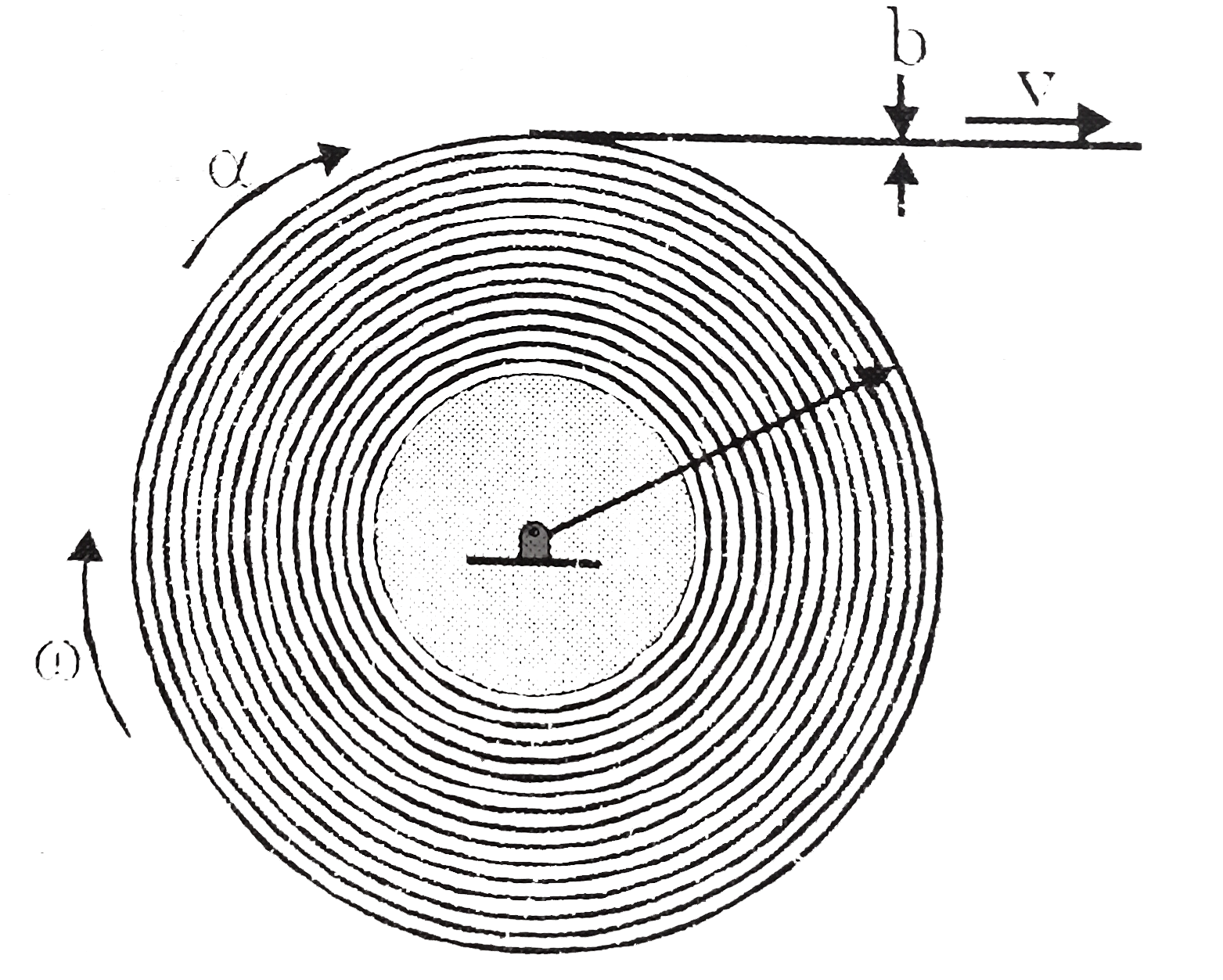An asteroid orbiting around a planet in circular orbit suddenly explodes into two fragments in mass ratio If immediately after the explosion, the smaller fragment starts obriting the planet in reverse direction in the same orbit, what will happen with the heavier fragment?Solution in Gujrati
Fall on the planet
Start orbiting the planet in a larger orbit
It’ s Angular momentum remains conserve during motion
Escape from the gravitational interaction with the planet
The correct Answer is:C, D

is greater than escape velocity so the heavier fragment will escape from the gravitational interaction with the planet
Topper's Solved these Questions
- TEST PAPERSBOOK - ALLEN CHAPTER - TEST PAPERSEXERCISE - part-2 physic
48 Videos
- TEST PAPERSBOOK - ALLEN CHAPTER - TEST PAPERSEXERCISE - PHYSICS
16 Videos
- TEST PAPERSBOOK - ALLEN CHAPTER - TEST PAPERSEXERCISE - Part-1 Physics
15 Videos
- TEST PAPER 4BOOK - ALLEN CHAPTER - TEST PAPER 4EXERCISE - PHYSICS
45 Videos
- UNIT & DIMENSIONS, BASIC MATHS AND VECTOR BOOK - ALLEN CHAPTER - UNIT & DIMENSIONS, BASIC MATHS AND VECTOR EXERCISE - Exercise (J-A)
7 Videos
Similar Questions
In a continuous printing process paper is drawn into the press at a constant speed v. Denoting by 'r' the radius of the paper roll at any given time and by 'b' the thickness of the paper. What is the angular acceleraion of the paper roll?

View SolutionA block of mass m is hanging from a light string of length l . A bullet of mass m strikes the hanging mass and gets embedded into it. The value of v such that tension in string and the speed of combined mass becomes zero simultaneously during the subsequent motion , is :-

View SolutionA quantity of 2 mole of helium gas undergoes a thermodynamic process, in which molar specific heat capacity of the gas depends on absolute temperatureT , according to relation:
C=3RT4T0
where T0 is initial temperature of gas. It is observed that when temperature is increased. volume of gas first decrease then increase. The total work done on the gas until it reaches minimum volume is :-
View SolutionTwo forces, each of magnitude F have a resultant of the same magnitude F. The angle between the two forces is
View SolutionMatch List I with List II and select the correct answer using the codes given below the lists :

View SolutionA stationary body explodes into two fragments of masses m_(1) and m_(2) . If momentum of one fragment is p , the energy of explosion is
View SolutionA body moving radially away from a planet of mass M , when at distance r from planet, explodes in such a way that two of its many fragments move in mutually perpendicular circular orbits around the planet. What will be
View SolutionA bomb of mass 4 m explodes into two parts of mass ratio 1 : 3 . If the K.E . Of smaller fragment is K , find the K.E. of the larger fragment.
View SolutionA bomb is kept stationary at a point. It suddenly explodes into two fragments of masses 1 g and 3 g. the total K.E. of the fragments is 6.4×104J. What is the K.E. of the smaller fragment
View SolutionA srtone of mass m1 moving at uniform speed v suddenly explodes into two fragments. If the fragment of mass m2 is at rest, the speed of the other fragment is
View SolutionA bomb of mass m is thrown with velocity v. It explodes and breaks into two fragments. One fragment of mass m', immediately after the explosion, comes to rest. The speed of the other fragment will be
View SolutionA stationary shell explodes into two fragments, having masses in the ratio of 1:2. The heavier fragment attains a Kinetic energy of 100J. The Kinetic energy released in the explosion is:
View SolutionA bomb falling freely bursts after 10 sec. (g=10ms2) into two fragments of masses in the ratio of 2:1. The velocity of heavier fragment immediately after the explosion is 200ms−1 vertically downwards. The velocity of the lighter fragment immediately after the explosion is
View SolutionA bomb falling freely bursts after 10 sec. (g=10ms2) into two fragments of masses in the ratio of 2:1. The velocity of heavier fragment immediately after the explosion is 200ms−1 vertically downwards. The velocity of the lighter fragment immediately after the explosion is
View SolutionA stationary shell explodes into two fragments, having masses in the ratio of 1:2. The heavier fragment attains a Kinetic energy of 100J. The Kinetic energy released in the explosion is
View SolutionA bomb falling freely bursts after 10 sec. (g=10ms−2) into two fragments of masses in the ratio of 2:1. The velocity of heavier fragment immediately after the explosion is 200ms−1 vertically downwards. The velocity of the lighter fragment immediately after the explosion is
View Solution
